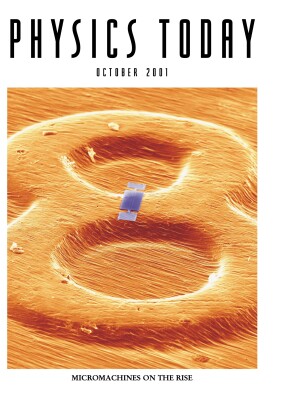Hsu-Yun Fan
DOI: 10.1063/1.1420570
Hsu-Yun Fan, Duncan Distinguished Professor emeritus in the physics department at Purdue University and a leader in condensed matter physics, died in Lafayette, Indiana, on 5 October 2000 after several years of declining health.
Fan was born on 15 July 1912 in Shanghai, China. He received his BS in electrical engineering at the Harbin Polytechnic Institute in China in 1932. He earned an MS in 1934 and a DSc in 1937, both in electrical engineering, from MIT to which he was attracted by its international reputation. His doctoral dissertation was entitled “The Transition from Glow Discharge to Arc.”
From 1937 to 1947, Fan worked at the National Tsing Hua University in Beijing, starting as an assistant professor and then becoming a professor of physics in 1939. Fan’s tenure at Tsing Hua coincided with a politically turbulent period during which China suffered Japanese aggression followed by civil war. Indeed, the university was evacuated to Kunming in the Yunnan province during part of this time. During this period, Fan heroically managed to function as a scholar and teacher, and carried out research on the physics of electrical contact between a metal and a semiconductor, photoelectric and thermoelectric emission from metals, and the theory of rectification of an insulating layer.
After a short interlude as a visiting professor in the MIT physics department from 1948 to 1949, Fan was attracted to Purdue by Karl Lark-Horovitz, the head of the physics department and a pioneer in semiconductor physics. Fan joined the department as an associate professor at a most opportune time. As a result of wartime defense research, Lark-Horovitz had realized that the field of semiconductors offered great opportunities for exciting research, mobilized the department’s resources, and assembled a team of young scientists to tackle a range of experimental and theoretical problems. Fan became a leader in this group and established, within a short time, an extremely productive line of studies, namely, the optics of semiconductors. He made pioneering contributions to the physics of semiconductors during this period.
Fan became a professor in 1951 and the Duncan Distinguished Professor in 1963, a position he held until his retirement in 1978. During the 1950s and 1960s, when semiconductor physics emerged as a major discipline in condensed matter physics and its impact was felt in both basic science and in device technology, Fan made many landmark discoveries. Examples are infrared transparency, absorption edge, and nature of the valence and conduction bands of silicon and germanium; free-carrier absorption in n- and p-type germanium and its complex valence band; and the temperature and pressure dependence of the energy gap of semiconductors. He also found that plasma edge associated with free carriers leads to optical determination of effective masses. His achievements in semiconductor physics are many, including lattice vibrations of covalent and ionic semiconductors, oscillatory intrinsic photoconductivity, and excitonic absorption in the III–V semiconductors. Fan made significant contributions to nearly every branch of semiconductor physics; his papers are standard references in the subject.
Fan maintained an active research program until the time of his retirement. Optical experiments and their analysis continued to occupy his interest. With striking success, he investigated such diverse phenomena as Faraday effect of p-type Ge, two-photon absorption and second-harmonic generation in semiconductors, and light scattering by magnons in magnetic oxides and sulphides.
After retirement, Fan continued to maintain a lively interest in semiconductor physics, the research activities of his colleagues, and the affairs of the department of physics. Based on his many years of teaching, he wrote an advanced textbook on condensed matter entitled Elements of Solid State Physics (Wiley, 1987).
Fan’s achievements are uniformly characterized by a sharp focus on fundamental issues, meticulous attention to detail, and careful analysis of experimental data and their physical significance. The range of problems he successfully tackled speaks highly of his intellectual vigor and ambition. During his distinguished career, he mentored 22 PhD students and 20 research associates. He applied to himself and demanded from his collaborators the highest standards, which undoubtedly contributed to the success of his associates. Above all, the originality of ideas and the tenacity with which he pursued them are the hallmarks of Fan’s numerous scientific accomplishments.
Purdue’s admiration for Fan and pride in his achievements are expressed in the recognitions he received: the Sigma Xi Research Award (1954) and the Herbert Newby McCoy Award (1969).
Fan’s international reputation is equally based on his authoritative review articles that have served as milestones in semiconductor physics, and on his scientific leadership in introducing generations of graduate students and postdoctoral associates to the rigors and pleasures of original research. He taught condensed matter physics to advanced students for more than a quarter of a century. Insistence on conceptual and logical clarity characterized his interactions in the classroom, his seminars, and his research with students and collaborators from around the world. His influence continues in many national and international institutions. With his departure, an important chapter in the history of the Purdue physics department comes to a close.


More about the Authors
Anant K. Ramdas. Purdue University, West Lafayette, Indiana, US .
Sergio Rodriguez. Purdue University, West Lafayette, Indiana, US .
